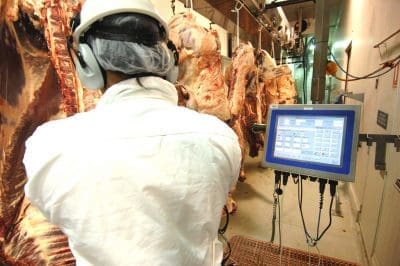Apart from a few 10c/kg adjustments to line-up with local competitors’ offers, most direct consignment slaughter grids were unchanged across the eastern states this week.
 A distinct lack of killable cattle in southern states continues to push processor buyers north, with plenty of southern buyers evident in Queensland selling centres again early this week.
A distinct lack of killable cattle in southern states continues to push processor buyers north, with plenty of southern buyers evident in Queensland selling centres again early this week.
Rain across parts of NSW and extending as far north as Central Queensland since last weekend has created some localised cattle delivery logistics problems, especially in Central Queensland – but most processors said they had been able to manage a few postponements without problems. In cultivation areas, the rain will help underpin crop-fed cattle in early spring.
While some northern processor operators remain out of the market for the timebeing, confident that they have places filled until the second week of August, other large southern Queensland plants are this week offering 430c/kg on heavy cows and 490c/kg on grass heavy export steer with HGP.
Big premiums emerging for ‘special’ cattle
Some big price gaps have emerged between the specialty lines targeted at premium markets, and everyday generic slaughter cattle – not particularly unusual at this time of year.
We saw quotes this morning for Certified Organic steer 0-2 tooth at anywhere from 680c/kg to 735c/kg in Queensland, and as high as 760c/kg in the south, and certified grassfed MSA heavy steer around 600c/kg – at least 100-180c/kg better than everyday grass ox. European Union-eligible cattle are this week trading around 585c/kg in southern Queensland.
Central Queensland plants remain 10-20c/kg behind those generic prices for Queensland’s southern region, quoted above.
Further south, processors are clearly struggling for numbers, forcing some grids higher to try to maintain throughput.
One large export plant in southern NSW has lifted cows to 520c/kg, and four-tooth bullocks 610c without HGP this week, while eastern regions of South Australia have cows 530c/kg and grass ox 610c/kg.
With at least 80-90c/kg price difference on good cows, it’s easy to see why southern processors are pushing north into Queensland to source slaughter stock – even with a big +30c/kg freight bill involved to get them home.
“Every man and his dog from Victorian processing is up here in Queensland at present,” one northern processor cattle buyer told Beef Central this morning.
One of the features that has worked in beef exporters’ favour this year has been a remarkably stable currency. Meat traders say the next worst thing after a high Aussie dollar is a volatile Aussie dollar. Since the start of this year, the A$ has traded in a narrow US3c band from around US64c to US67c – and within that, in an even more narrow US1c band for much of the time. Compare that with the same six months last year, when the A$ traded from the US64s to the 72s – an 8c swing, making export trading much more volatile.
Saleyards trends
Physical sales held early this week have seen a firming trend on smaller numbers in southern states, while Queensland prices have eased in places.
Wodonga sale this morning yarded 860 head, down 20pc on last week. The market rallied with export cattle a feature, and cows keenly sought. The outstanding selection of trade steers and heifers resulted in a price boost of 25-40c/kg. Trade steers fetched 330-390c, while the heifer portion made from 300-355c. In the export market competition was intense with bidding duels frequent. Heavy steers averaged 360c while bullocks improved 40c to average 334c. The smaller offering of cows encouraged buyers to bid strongly for all weights and grades. Heavy cows surged 37-51c making from 270-299c.
Gunnedah this morning yarded 1085 head, around half the size of the previous week, due to local rain. There was a good supply of cows while young cattle were well represented. Strong demand from processors and lotfeeders resulted in dearer trends for grown steers and heifers. Demand for cows saw the market trend show an improvement of as much as 20c/kg and more in places.
Wagga sale yesterday yarded 3555, down around 900 on the previous week. The market sold to mixed trends. The majority of heavy steers 500-600kg sold within the range of 283-408c/kg. In the export market, competition was patchy, with some cattle looking wintery. Heavy steers and bullocks sold from 240-338/kg. Heavy cows sold from 250-286c.
Roma sale this morning yarded 5200, down about 3000 head on last week. The sale was still in progress as this report was written, but an interim report indicated that prices could not be maintained especially on the secondary lines. Grown steers 500-600kg made from 240-302c/kg to feed.
